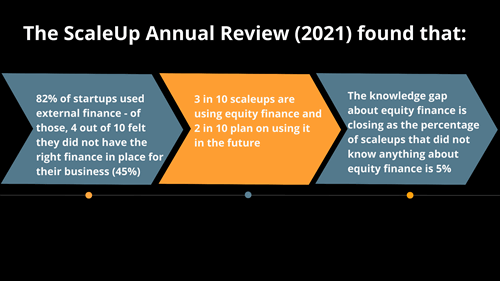It’s easy to find what goes into a pitch deck, but how do you prepare to write an outstanding pitch?
Nightingale can provide data, information and insight you need for a credible and concrete pitch to increase your chances of receiving funding.
In this blog we’ll talk you through the steps you need to take to create your high-impact pitch deck.
- Decide what funding level you are ready for
- Choose the right investor
- Research your evidence
- Compile your pitch deck
We'll also give you guidance on where to go to find some great examples of pitch decks.
What funding level are you ready for?
In total, there are 7 stages of funding:
- Pre-seed
- Seed
- Series A
- Series B
- Series C
- Series D & E
- Initial Public Offering (IPO)
We’ll focus on the first three stages of funding and give you some tips for preparing your pitch deck.
How to know if your startup is ready for Pre-Seed funding:
-
-
You can show evidence of product-market fit
-
You’re about to make new hires
-
You might not have a fully developed product or MVP but you have something to show in the form of an early prototype
-
You have some interest from potential customers
-
You’ve developed a realistic revenue model
-
Sources: Friends and family, Accelerators and incubators, Pre-Seed VC firms
How to know if your startup is ready for Seed funding:
-
-
You can show evidence of product-market fit
-
You have made new hires and are looking to grow the team
-
There is a product that has been launched on the market
-
You can demonstrate traction and you can demonstrate market size
-
You have a tested revenue model and there is some revenue
-
Sources: Angel investors, Venture capitalists, Crowdfunding, Accelerators, Debt funding, Personal savings
How to know if your startup is ready for Series A funding:
-
-
You are focusing on driving revenue growth and already have an ARR of $1m
-
You’ve shown how the product fits the market need and there is strong product market fit but you want to optimise the product
-
You can show that the business, product and business is scalable and will have economies of scale
-
You have a strong vision for where you want to direct your business in the future
-
Sources: Venture capitalists, Angel investors
![]() How do you choose the right investor?
How do you choose the right investor?
You can find investors through pitching competitions such as The Pitch, local networks and LinkedIn.
Key questions to consider:
- Do they have influence in the industry you’re entering or operating in?
- Are they right for the stage your business is at?
- Are they passionate about your business?
- Are they easy to get along with?
How do you research your evidence?
A high impact pitch deck is built on solid evidence. You need to show you know your market, customers and users. Design research can help you get the evidence you need.
It's tempting to jump straight into putting your pitch deck together but taking time to research and reflect will pay off in the long run.
Here's some top tips for gathering your evidence:
- Plan your research - figure out your key questions and how you will find the answers
- Make the most of free information - find out what you can about your market from online sources and your network.
- Talk to customers and experts in the field - using methods such as indepth interviews, focus groups or surveys will give you the solid evidence you need.
We'd love to chat you through which research methods will give the best results - get in touch.
How do you compile your pitch deck?
Here's a list of some common headings for pitch deck slides:
- Product and problem
- Solution and your USP
- The market size
- The team
- What the money is spent on
- Business model
- Competition and market opportunity
- Marketing and sales plan
- Financial projections/model and vision
- Traction milestones
- The ask
How to write your slides and create pitch decks:
- Consider your audience. Think about what information they need.
- Create slides that act as prompts rather than jam packed with information.
- Start strong! Think about the order of information in your deck to make sure you capture attention from the start.
- Use your time well. It's useful to think through what you would include to pitch your idea in a 60 second pitch as well as longer, more detailed 10 minute, 20 minute or 30 minute pitch.
- Produce two versions of the pitch deck: one for the presentation and the other with more detail to be read on its own.
- Make it stand out! Add your branding to the pitch deck and perhaps use a professional graphic designer.
Some great examples of pitch decks
If you need to some inspiration there is a lot of content out there to show examples of pitch decks from huge brands:





